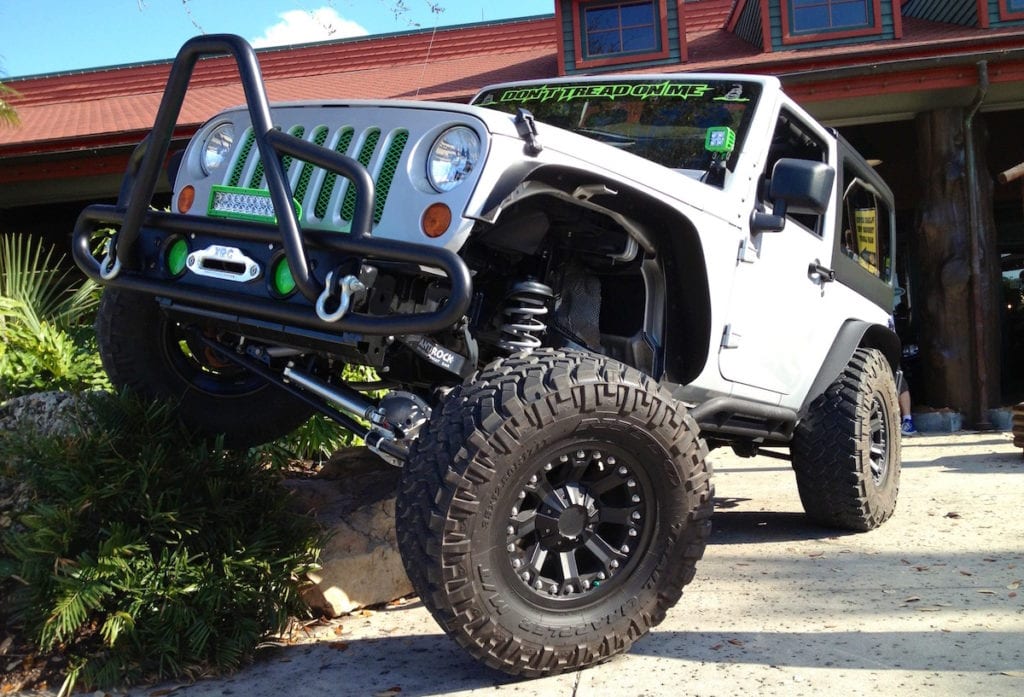There’s nothing quite like the feeling of riding in a Jeep Wrangler. If you have to describe it, it’s the feeling of freedom and adventure. In some ways, even a quick jaunt to the nearby suburban mega-mart is akin to a cross country expedition in some exotic foreign land.

While some Jeep Wrangler owners use their 4X4 for long road trips, others use them to their full potential, subjecting them to harsh environments like hot desert trails, rocky mountain terrain, and the deep, muddy, swampy woods. It’s these Jeep owners who are most interested in lift kits.
Lift kits are commonplace these days. You can find lift kits for Ford Broncos, old Internationals, and even lift kits for trucks. But for now, we’ll concentrate on the ever-popular lift kit for all models and makes of the classic Jeep Wrangler.
Says a report on the four-wheeling subject, when it comes to the right lift kit for your Jeep, there are quite a few factors to take into consideration. You need to have a good idea of what you’ll be using the kit for, what your budget is, your tire size, and more. These are the crucial factors that affect the height and which type of lift kit would be the most beneficial for your Jeep.
Why Do You Need to Lift Your Jeep?
The answer is simple. If you’re planning on doing some real off-roading you’ll need to lift your Jeep so that you have better suspension and better ground clearance. You’ll also be able to install larger, fatter tires which are better for off-roading in rough terrain.
Some Jeep owners choose to lift their Wranglers simply because they think it looks bad ass. But if you are planning on installing a lift kit in your jeep you need to consider what you plan on doing with it, how much you are willing to spend, and how hard the installation process might be.
While everyone has their own private reasons for installing a lift kit, be it for aesthetics or off-roading or both, your precise reasoning will determine which type of lift kit you end up installing.
Utility Vehicle
Back during World War II the Jeep was designed as the ultimate, highly mobile, rugged utility vehicle that could operate under combat conditions. And it remains as such today (the basic design of the Jeep Wrangler hasn’t changed in 80-plus years). For most people the Jeep can do it all. It’s an “off-road toy,” a daily commute vehicle, a vehicle for camping, plus you can use it to toe other equipment, plow driveways, work the farm, and more.
The point is, if you’re on the hunt for a lift kit that will be subject to multi-use situations, the overall goal if to balance “on-road drivability” with the flexibility of off-road suspension. If you happen to be the owner of a dedicated wheeler which is able to handle higher speeds than the average Wrangler, the addition of a lift kit will reduce the high-speed traits in favor of better suspension and articulation.
Things to Consider Prior to Installing a Wrangler Lift Kit
Lots of Jeep Wrangler owners tend to be DIY (Do It Yourself) types. But it’s important to be perfectly honest with yourself. Are you certain you can install a relatively complicated piece of equipment like lift kit all by yourself?
If you aren’t a licensed mechanic, it’s probably a good idea to employ a professional to install your new lift kit to make sure that it’s not only done the right way the first time, but also so you don’t damage your rig.
That said, if you decide to install the lift kit on your own, you will be spending hours under the Jeep making tweak after tweak after tweak in attempt to get it right. If, the end, you have screws and lug nuts left over, you might have installed the kit improperly.
If you have set your sights on a big lift kit that’s larger than 3.5 inches-plus, then you need to look at longer shocks and lower control arms. The rear and front brake lines will also have to be extended.
A lift of more than 4 inches will require longer upper control arms also. The track bar will need replacing along with longer emergency brake lines.
Keep in mind, when it comes to lift kits for Jeep Wranglers, there are literally dozens to choose from. That’s why it’s so important to know precisely what you plan on doing with your lift kit.
